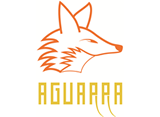Tom Gilb
Teacher Author Consultant, Tom Gilb & Kai Gilb, Norway & USA
Tom Gilb is credited by many of the Agile Manifesto Signers (Beck, Sutherland, Cohn, Highsmith) as their inspiration for Agile ideas in his Principles of Software Engineering Management book (1988). Sutherland, more recently, cites Gilb ideas as the most advanced he has seen for an agile framework addition. Tom has implemented his ideas for decades in practice, in the most advanced companies worldwide.
The Value Agile ideas are not the simple and popular ones for coding velocity: they are at the systems level, and they focus on delivering measurable multiple values: they are your next step of agile maturity. The Value Agile ideas are proven (Large-scale, long-term, at Intel) to be Scale- Free: they work at any scale large or small.
Tom is an international practical consultant to leading organizations for decades. His practical methods have been adopted by the absolutely leading organizations world-wide. He is the pioneer of quantification of quality, since his book “Software Metrics” 1976, which was the basis for IBM Capability maturity Model Level 4. His subsequent books continued going deeper and broader. His 2014-2016 book ‘Value Planning’ extends this to Top Management territory. Beginning with quantifying management corporate ‘Visions’ and working its way down to IT Project Management level.
Presentation
KEYNOTE – ‘VALUE-DRIVEN AGILE’ FOR MANAGERS
A free framework for evaluating all agile frameworks and agile methods, as well as being a plug-in to any current framework to help you deliver value for money, to your projects, stakeholders, and employer.
All projects are about delivering sets of different values to project stakeholders. Many agile methods give ‘lip service’ to this agile ideal. But they never follow up with cases and methods for quantifying the values delivered. What you don’t quantify, you cannot manage!
Value-driven Agile will do the following.
1. Give you a – practical quantified tailored-to-your development-process-needs-and-profile – method for evaluating all agile methods and frameworks: it is about which ones give the most value for your situation?
2. Will give you a specific method (Value Agile) to plug in to any Agile Framework you now use, in order to help you, to be able to manage measurable delivery, of your own prioritized value objectives.
3. Will give you a free-forever tailorable stand-alone Agile method, so you do not have to pay anyone for training and certification, which is focussed on Multiple quantified values and costs.
A free copy of Tom’s 2019 Booklet ‘Value Agile’ will be given digitally to all attendees.
Micro-workshop / Presentation
BOARD LEVEL PRESENTATION FOR DELIVERING AGILE FOR THE ENTIRE ORGANIZATION: NOT JUST IT
Deep dive and applied techniques how to use Value-Driven Agile principles for solving problems.
Workshop
AGILE ARCHITECTURE ENGINEERING WORKSHOP
IT Architecture needs to be taken more seriously than it usually is.
This workshop will show you how to use quantified architecture requirements in order to quantify the effectiveness of all architecture ideas, as well as to quantify all related costs. This we call ‘architecture engineering’- It gives us a basis for evaluation, presentation, and agile followup of architecture.
Workshop Mode:
The class will form teams of 2 people, and work together on a self-chosen architecture problem.
The class teams will work in parallel on the same problem. The emerging requirements and architecture will be visible, and available, to all participants in real time. We will use an architecture engineering tool called app.Needsandmeans.com, to learn a specification language called ‘Planguage’ (Planning Language) – which is a rich architecture modelling language, free and open.
The Workshop will gradually build up a practical understanding of, and ability to specify quality and value requirements, quantitatively. Then we will learn to specify and decompose architecture, so that we can estimate how good the architecture ideas are for our stated purposes and resource constraints.
Things You Can Expect to Learn.
Limitations:
There will be a stream of ‘new’ architecture concepts, at a very high rate, over ten per day, which are all interconnected. So you will be slightly overloaded. But at least you will have practiced the ideas, and worked on a team, building a complete system of requirements and architecture. You will be given documentation for further self study.
Target audience:
Software Architects, Product Owners, Business Analysts or anyone, who does planning, creates requirements, or design product strategies.

 51.65MB
51.65MB 

